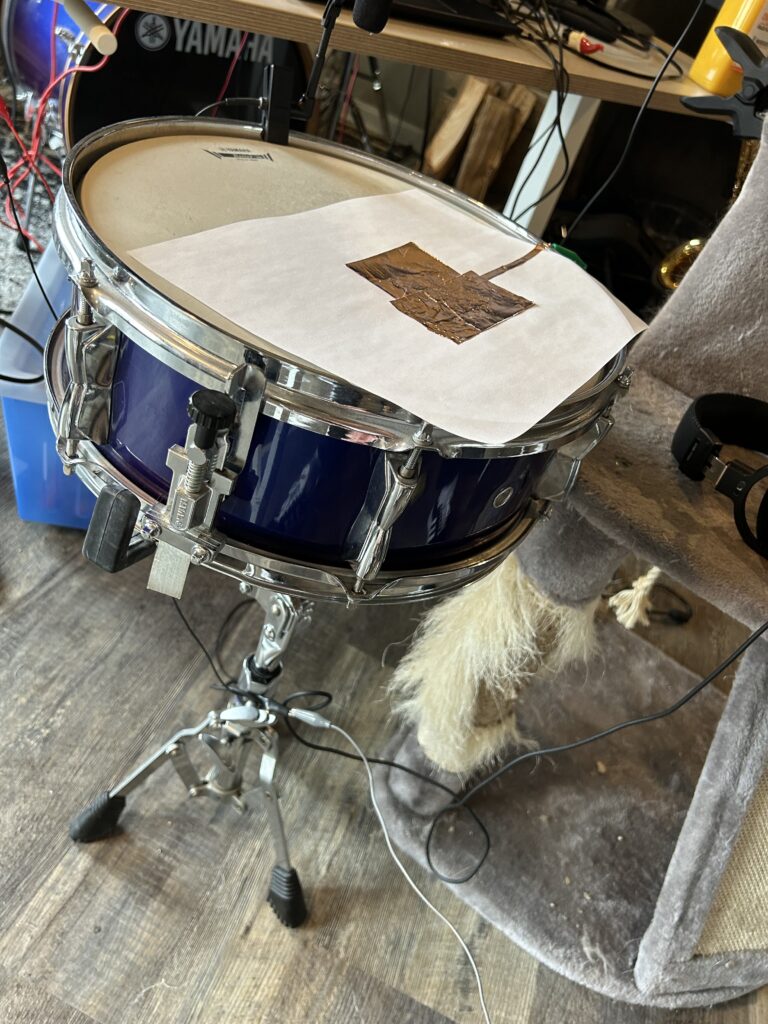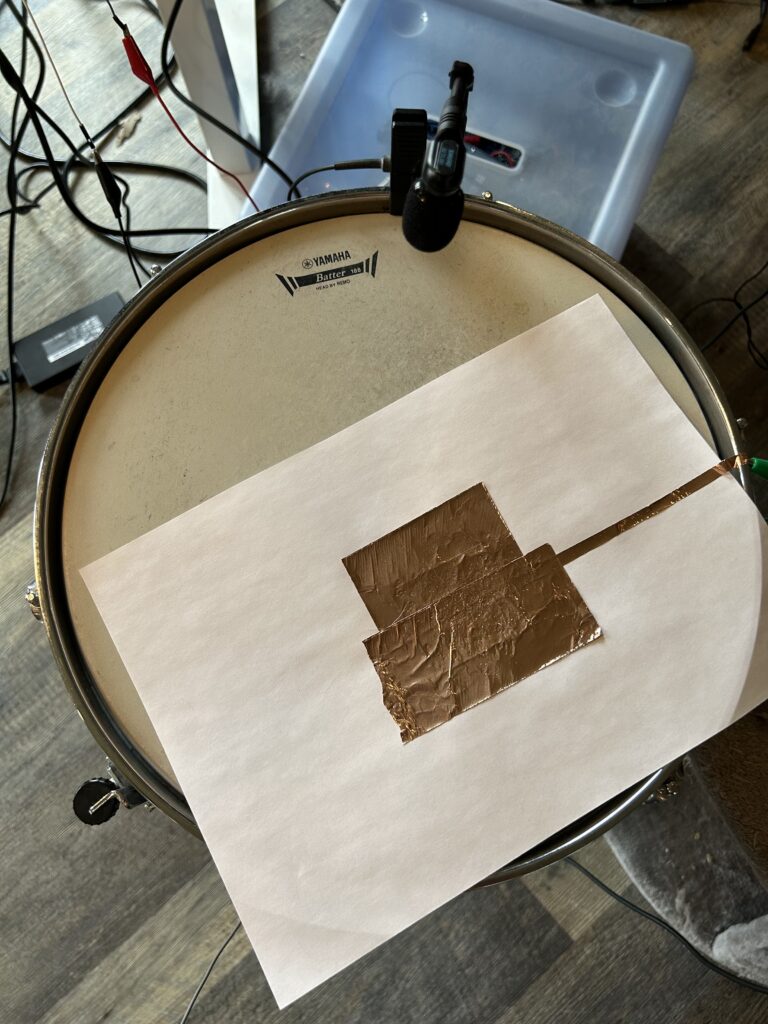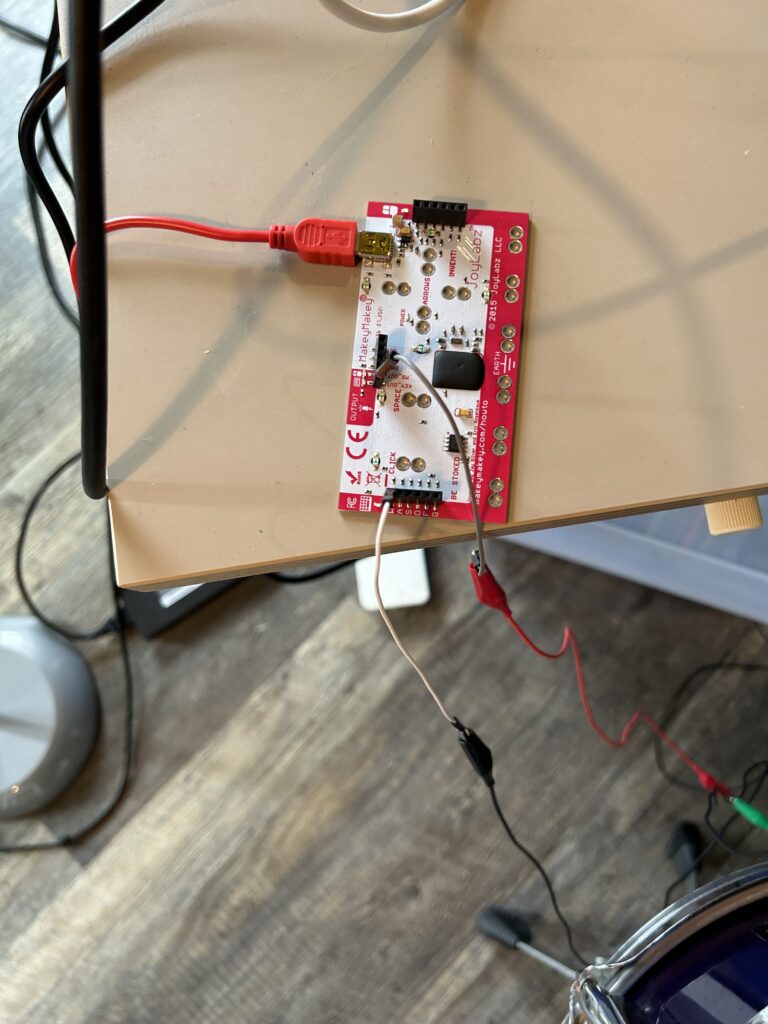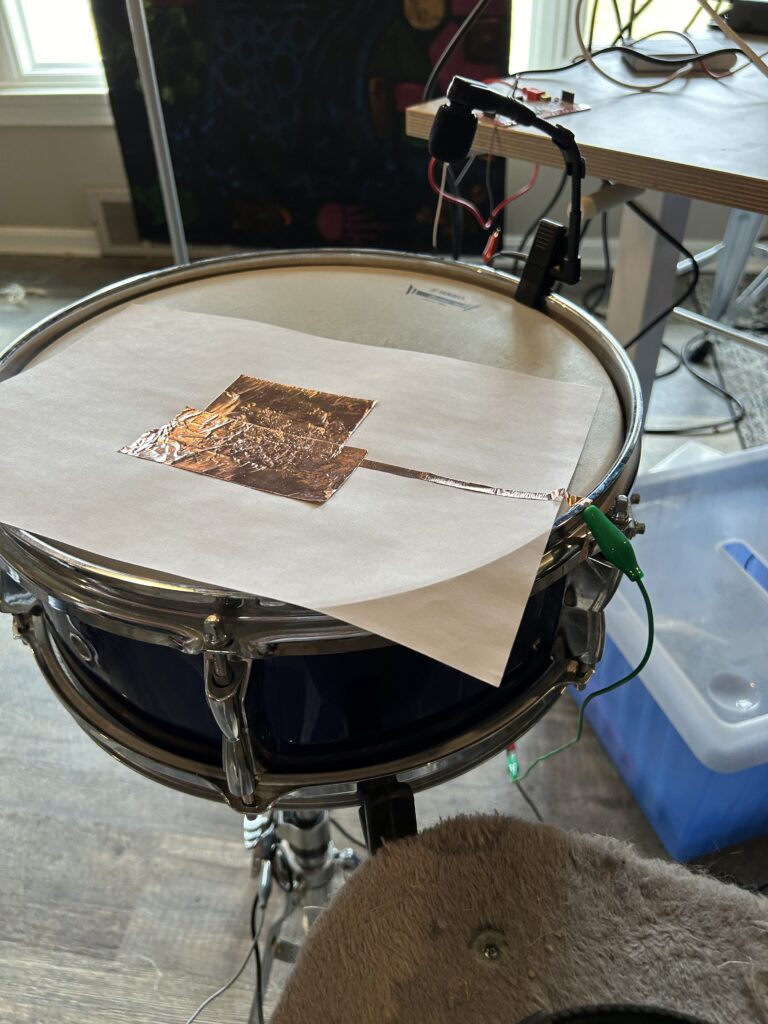Pressure Project 3
Posted: March 28, 2024 Filed under: Uncategorized | Tags: Pressure Project Leave a comment »A Mystery is Revealed | Color By Numbers
Initially, I began this project with uncertainty about the mystery I wanted to explore. Reviewing past student work, I stumbled upon a personality test concept that intrigued me, expanding my understanding of what constitutes as a mystery.
Following my usual design process, I sought inspiration from Pinterest and various design platforms. A comic called “Polychromie” by artist Pierre Jeanneau caught my attention, particularly its use of anaglyph—a technique where stereo images are superimposed and printed in different colors, creating a 3D effect when viewed through corresponding filters. I was intrigued by how the mystery unfolded depending on the filter used.


While exploring the feasibility of implementing anaglyph on web screens, I encountered challenges due to my unfamiliarity with the term. Nonetheless, I pivoted towards a “color by numbers” concept, drawing inspiration from “Querkle,” a coloring activity based on circular designs developed by graphic designer Thomas Pavitte, who drew inspiration from logos designed using circles.

For practicality and time constraints, I chose simple images and creted them using Adobe Illustrator, layering the circles into colorable sections. Using MakeyMakey for interaction and Isadora’s Live Capture for audio cues, I facilitated engagement. Additionally, I devised a method using MakeyMakey and alligator clips for answering multiple-choice questions.
Implementing keyboard watchers, trigger values, and jump++ actors, I orchestrated transitions between scenes in the patch, ultimately unveiling the mysteries.







cycle one
Posted: March 28, 2024 Filed under: Final Project Leave a comment »For cycle one, i keep my goal simple – to explore and figure out my multiple resources and the combined possibilities of arduino (and sensors), isadora, and makeymakey.
i learned how to connect arduino with isadora, and explored touch-related sensors and actuators. I started with capacitive touch because it can be achieved with just connecting wires to the pins, and doesn’t require me to purchase extra sensors, but it turns out that the fact that it does not give analog output makes it hard to send value to isadora with the Firmata Actor. (while i did find that it could be possible to use serial communication instead of Firmata Actor, but that seems more coding, and I think that’s too much for now, i may return to this in the future). So I decided to use force sensor, flex sensor, and the servo.
I played with layering some videos together (some of the footages i collected), all of them shared something in common (an aesthetic i am looking for) – the meandering/stochastic motion of feral fringe. I tested out some parameters that would allow subtle change to the visual. Then i tried send the value from my sensor to affect the subtle changes.
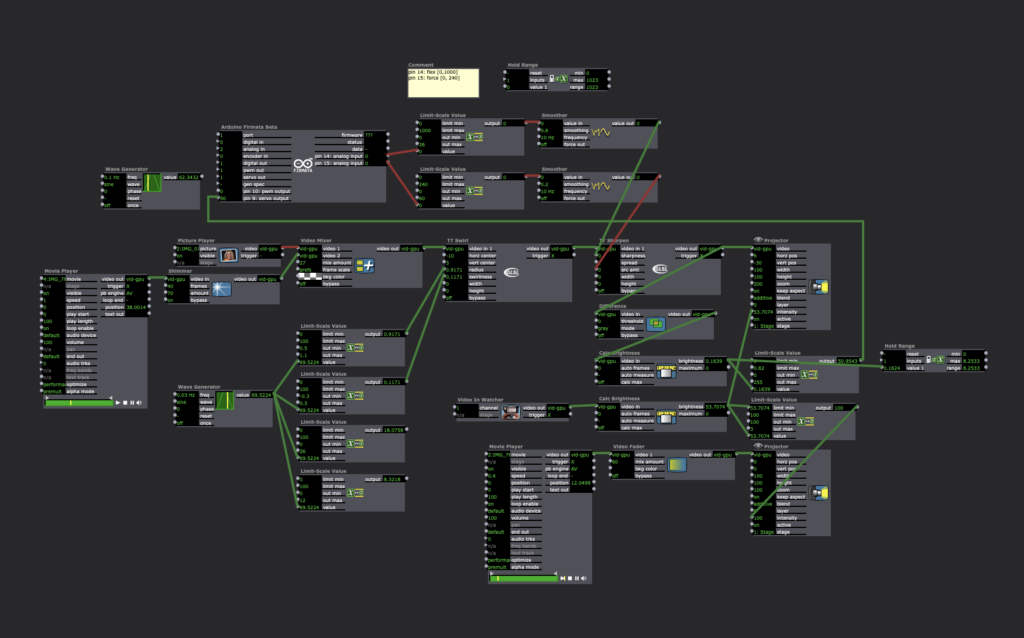
some tutorials that i find helpful:
(thanks Takahiro for sharing this about Firmata in his blog post!):
https://www.instructables.com/Arduino-Installing-Standard-Firmata/
https://www.instructables.com/How-To-Use-Touch-Sensors-With-Arduino/
https://docs.arduino.cc/learn/electronics/servo-motors/
Force sensor: https://learn.sparkfun.com/tutorials/force-sensitive-resistor-hookup-guide/all
Flex sensor: https://learn.sparkfun.com/tutorials/flex-sensor-hookup-guide/all
I was also thinking about the score for audience, that supports the intention of [shared agency, haptic experience (with the wires as well), subtle sensations], and I really love the sensation of the wires dangling and twitching like tentacles ~ i would love for people to engage with it:
In pairs, one person will close eyes, the other person will guide them in the space. While roaming around in the space, eye-closed person will explore the space with touch, which then affects visuals/sounds/sensations in the space.
This source from an activity we did in Mexico, also i find another artist did something similar. i find this audiencing quite effective in the sense that, eye-closed enables that people don’t select and manipulate the object by judging its appearance or functions, which makes new “worlding” happen. And, with eyes closed, there is an extra layer of care in our touch and pace. This also resonates with what i studied in dance artist Nita Little’s theory of “chunky attention” versus “thin-sliced attention”. With eyes closed, we don’t come to recognize a thing as a chunky whole thing and assume we already know it, but we are constantly researching every bit of it as our touch goes through it. With the pair format, we are also constantly framing the “scene” for each other.
Envisioning space use for final cycle:
– in molab
– a projector (i am thinking of using my own tiny projector, because it’s light and easy to move, i probably wanna audience to play with touch/move that as well)
– space wise, i am thinking that part where the curtain track goes out (see sketch below, the light green area), but i am also flexible. with the next circles, i need to test out how to hook my wires, how long the power cable would be in order to figure out the realistic spacial design…

Pressure project 3 – sharing a wandering?
Posted: March 5, 2024 Filed under: Pressure Project 3 Leave a comment »When designing this experience in response to the prompt of “mystery is revealed”, my thought is that, I don’t want to be the one in control to reveal the mystery, but I wanna send the participants on a journey where they disclose mystery for themselves.
I am interested in what shared agency and reciprocal relationship can do. So I devised this experience where the duet have to work together to decide the journey for themselves. I am interested in haptic experience, so some trigger requires the duet to hold hand together. So the experience is co-created by both participants and some random factors:

I thought of the resource of using the green screen from zoom to carve out the human out and compose it to the video background. I think I start with thinking of using zoom quite spontaneously even without knowing how exactly I wanna use, probably because of the past three years of weekly dancing in zoom…
And the videos themselves are composed of a couple of clips that I took with my phone years ago. To me, all these clips share a kind of texture that feels visceral and has a potential of touching the unconsciousness. That’s why I choose to use these specific imagery for this project whose theme is related to mystery.
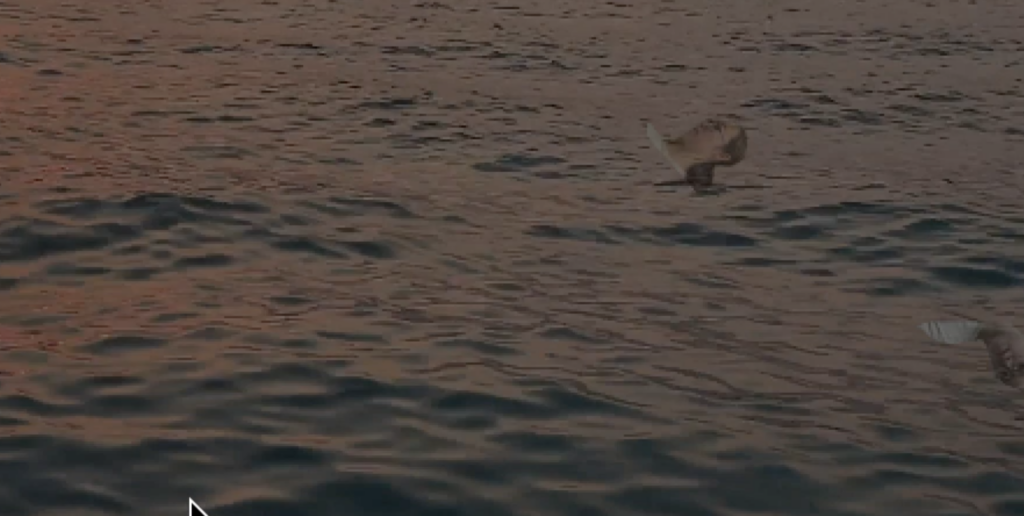
Isadora patch:
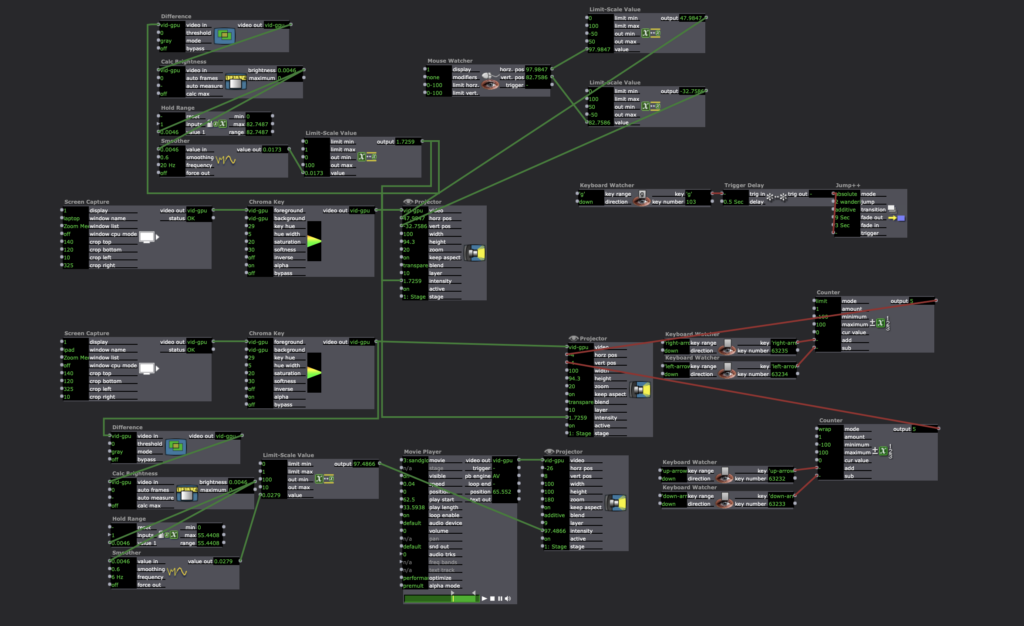

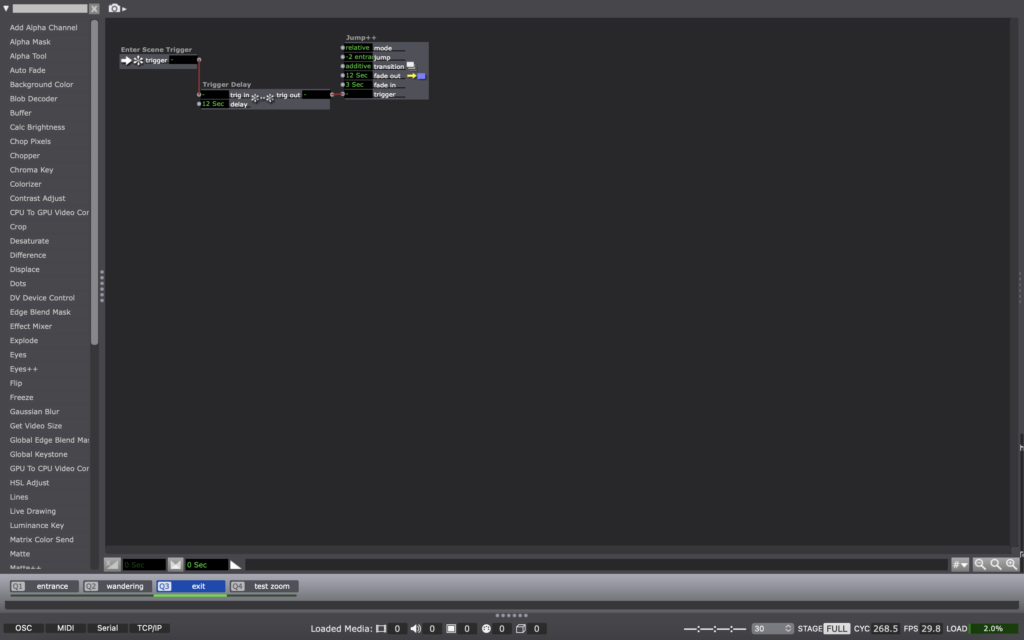
Makeymakey connection:
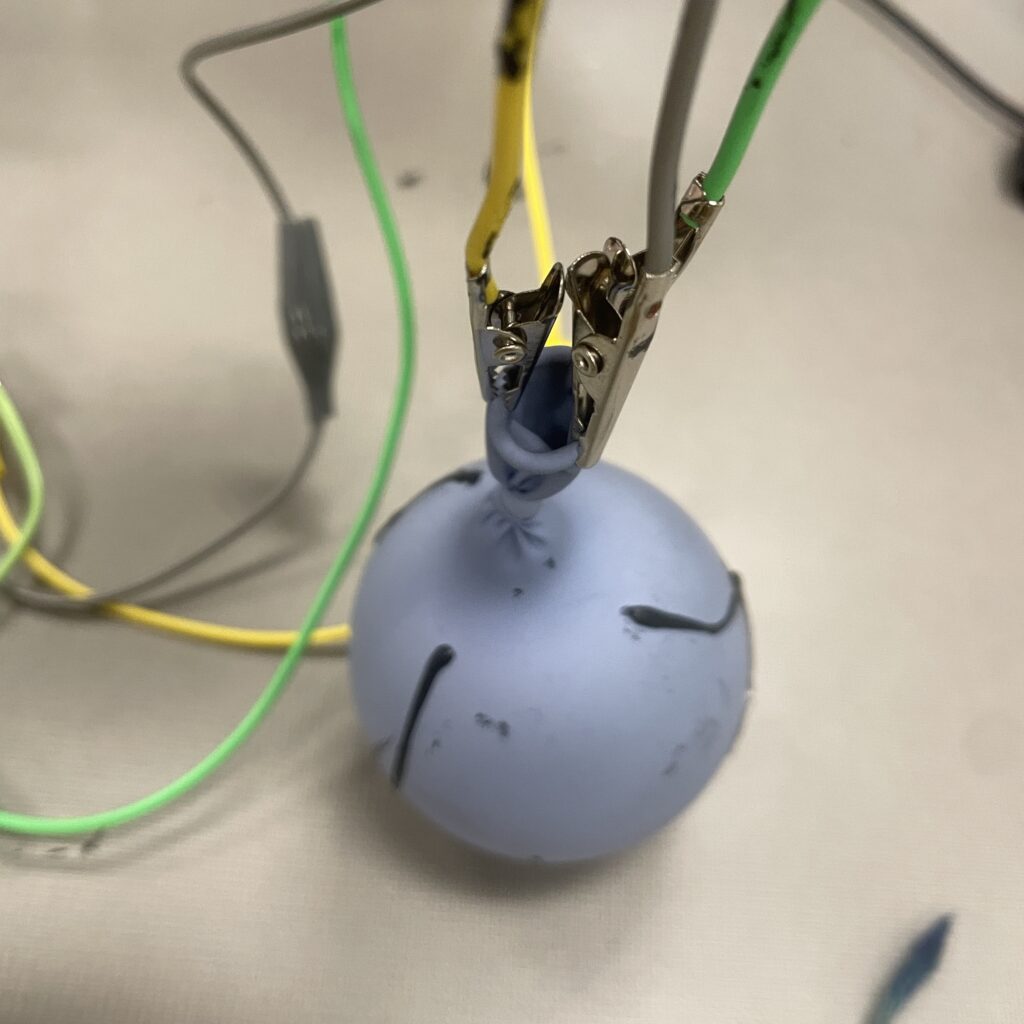

i kinda of appreciate the time contraints of 10 hours, it takes the pressure of me by pushing me to make quicker decisions and letting go when i was wavering between too many ideas.
Several things I bumped into but not yet figured out, and am interested in exploring further is:
– how to elicit and engage with the fragility and instability side of technology. I was noticing it intriguing about the use of a water-soaked thread as a conductor, which involves an uncertainty of how long it takes for the water to evaporate that it eventually becomes not conductive. The same goes with the use of conductive ink – after I painted it onto the plastic strap, the ink tends to break in-between easily. Also the design of water balloon part…The fragility and uncertainty here are fascinating to me, but I haven’t figured out how to more intentionally engage with it.
– another desired I had is to have the participants touching the webcam, (think about relations of visual and haptic), but I drop the idea because it is too much to incorporate here.
– and how to communicate such interaction to the audience, and how verbal or nonverbal communication have different affects.
PP3 – Scarcity & Abundance
Posted: March 4, 2024 Filed under: Uncategorized | Tags: Pressure Project Leave a comment »This project began with the idea to use a snare drum as a control event in relation to the Makey Makey device and Isadora. With the prompt of ‘a surprise is revealed’, I wanted to explore user experiences involving sharp contrasts in perspective through two parallel narratives. One narrative (‘clean path’) contains imagery suggestive of positive experiences within a culture of abundant resources. The second narrative (‘noisy path’) includes imagery often filtered out of mainline consciousness as it is a failure byproduct within the cultures of abundant resources. By striking the snare drum in accordance with an audible metronome, the user traverses a deliberate set of media objects. In photo based scenes, there is a continuum of images scaled from most to least ‘noisy’. Hitting the drum in synchronous with the metronome will enhance the apparent cleanliness of the image. While hitting off beat renders the reverse effect giving more noisy or distasteful images. In video based scenes, two videos were chosen which illustrate opposing viewpoints and similarly, the timing of drum beats alters the display of positive or negative imagery.
The first images are of random noise added to a sinusoid. A Python script was written to generate these images and an array of noise thresholds were selected to cover the variation from a pure sinusoid to absolute random noise. This serves as a symbol for the entire piece as Fourier mathematics form the basis for electrical communication systems. This theory supports that all analog and digital waveforms can be characterized by sums of sinusoids of varying frequency and amplitude. As such, all digital information (video, image, audio…) can be represented digitally in the form of these sinusoids for efficient capture, transmission, and reception. In the digital domain, often unwanted signal artifacts are captured during this process, so digital signal processing (filtering) mechanisms are incorporated to clean up the signal content. Just as filtering adjusts signal content from the binary level of media objects, it exists at higher computing levels, most notably algorithmic filtering in search engine recommendation, social media feeds, and spam detection in email inbox to name a few. Further, on the human cognitive level, societies with abundance of resources may be subjected to the filtering out of undesirable realities.
One such undesirable reality is that of consumer waste which is conceptually filtered through the out of sight, out of mind tactic of landfills. Even when in sight, such as in a litter prevalent city, the trash may be filtered out cognitively just as is done by audible ambient noise. The grocery store shopping and landfill scenes serve to illustrate this concept. The timelapse style emphasizes the speed and mechanicalness at which the actions of buying colorful rectangular food items and compressing massive trash piles occur. Within the system of food consumption, this video pair the familiar experience of filling up a cart at the grocery store with the unfamiliar afterthought of where those consumables are disposed.
The third scene takes influence from Edward Burtynsky’s photography of shipbreaking in countries like Pakistan, India, and Bangladesh in which a majority of the worlds ships and oil tankers are beached for material stripping. These countries are not abundant in metal mines and their economies are dependent on reception of ships for recyclability of iron and steel. The working conditions are highly dangerous involving toxic material exposure and regular demolition of heavy equipment which dehumanize workers and cause environmental damage. This video is contrasted by an advertisement for Carnival cruise line and a family enjoying the luxury of vacationing at sea on a massive boat containing a waterpark and small rollercoaster. This scene reveals an excessive leisure experience available to those in areas of abundance and the disposal process when these ships are no longer of use. Further emphasizing the sentiment of ‘what is one man’s trash is another man’s treasure’.
The last scene includes a series of screenshots taken from Adobe photoshop showing the digital transformation of a pregnant woman into a slim figure. Considering the human body as having an ideal form, akin to that of the pure sinusoid, manual and automated photoshop tools provide ways to ‘cleanup’ individual appearance to a desired form. With body image insecurity, obesity, and prevalence of cosmetic surgeries pervading the social consciousness of abundance societies, this scene registers the ease at which these problems can be filtered away.
The choice of the drum and metronome as a control interface is designed to reconstruct the role that conformity plays in decision making and exposure to alternate perspectives. It is suspected that most users will hit the drum on beat because that is what sounds appealing and natural. Here the metronome represents the social systems underpinning our formation of narratives around consumption and self identity. With the design of this media system, it is possible for the user to only experience positive imagery so long as they strike in phase with the metronome. But for those daring to go against the grain and strike off beat, they are greeted by a multitude of undesirable realities. It is my hope that in participating with this media system, that users realize the role that digital systems play in shaping perceptions as well as how our the style of our interactions alter the possibilities on what can be seen.
Resources used in this project:
- Makey Makey
- Snare Drum
- Copper Tape
- Drum Stick
- Isadora
- 10 Hours of time
